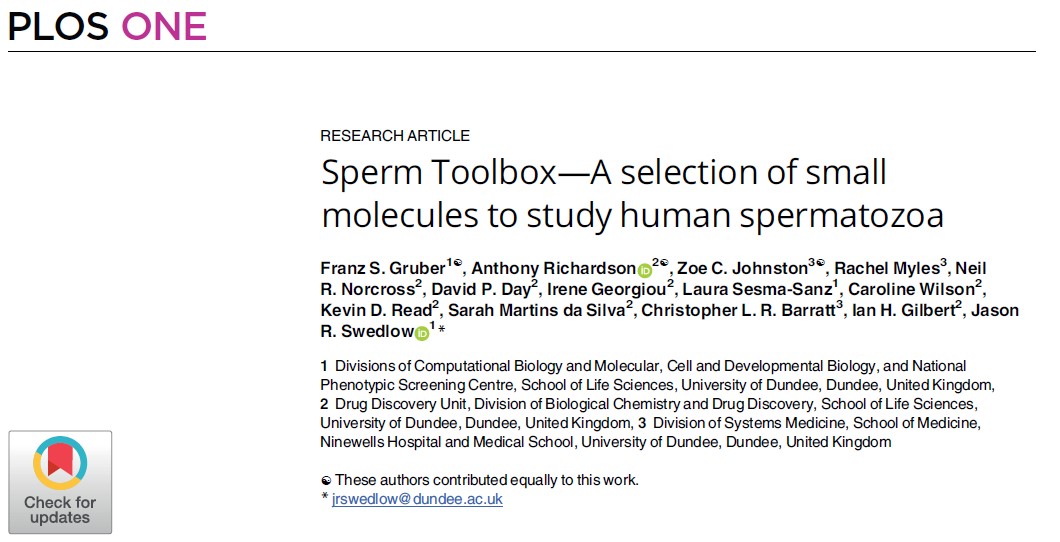In recent years, our knowledge about male reproductive health has made big advances. However, two main questions still remain unanswered: ‘When will we have an effective male contraceptive pill?’ and ‘Can we cure patients with abnormal spermiogram parameters?’
A recent study by Gruber et al. (https://doi.org/10.1371/journal.pone.0297666) brings us a step closer to answering both questions. The authors collected a series of 83 compounds that have been reported to affect sperm function in previous studies, developing a Sperm Toolbox (STB). High throughput phenotypic assays for sperm function were performed to simultaneously compare different compounds under the same experimental conditions. The effects of STB compounds on different sperm functions were tested using phenotypic functional assays on cells in multiple donor pools. For example, sperm motility and capacitation were tested using an automated microscope to record short time-lapse videos of sperm cells incubated with the compound in study. Two protocols were developed to study induction or inhibition of acrosome reaction after compound incubation using a high throughput flow cytometry. Live cell flow-cytometry was used to assess sperm viability after compound incubation. In addition, general cytotoxicity of the compounds was tested in HeLa and HepG2 cell lines. The novelty of this multi-assay profiling of compounds lies in the possibility to find phenotypic similarities induced by compounds and the ability to cluster the compounds based on their effect on sperm cells. For example, LRRK2-IN-1, Clofarabine, Linsitinib and Trequinsin are all compounds which induce sperm hyperactive motility and acrosome reaction without affecting sperm viability or general cytotoxic activity.
Similar toolboxes can become a valuable resource for testing new compounds and can represent a starting point for potential drug discovery campaigns in future. Authors state that this is the first version of Sperm Toolbox, aiming to release annual updates including the compounds that have been published in the meantime. This would represent a growing library of drugs that have positive or negative effect on sperm function and viability in humans, that could be used as contraceptive or male fertility medicine, as well as in basic research of sperm function.

